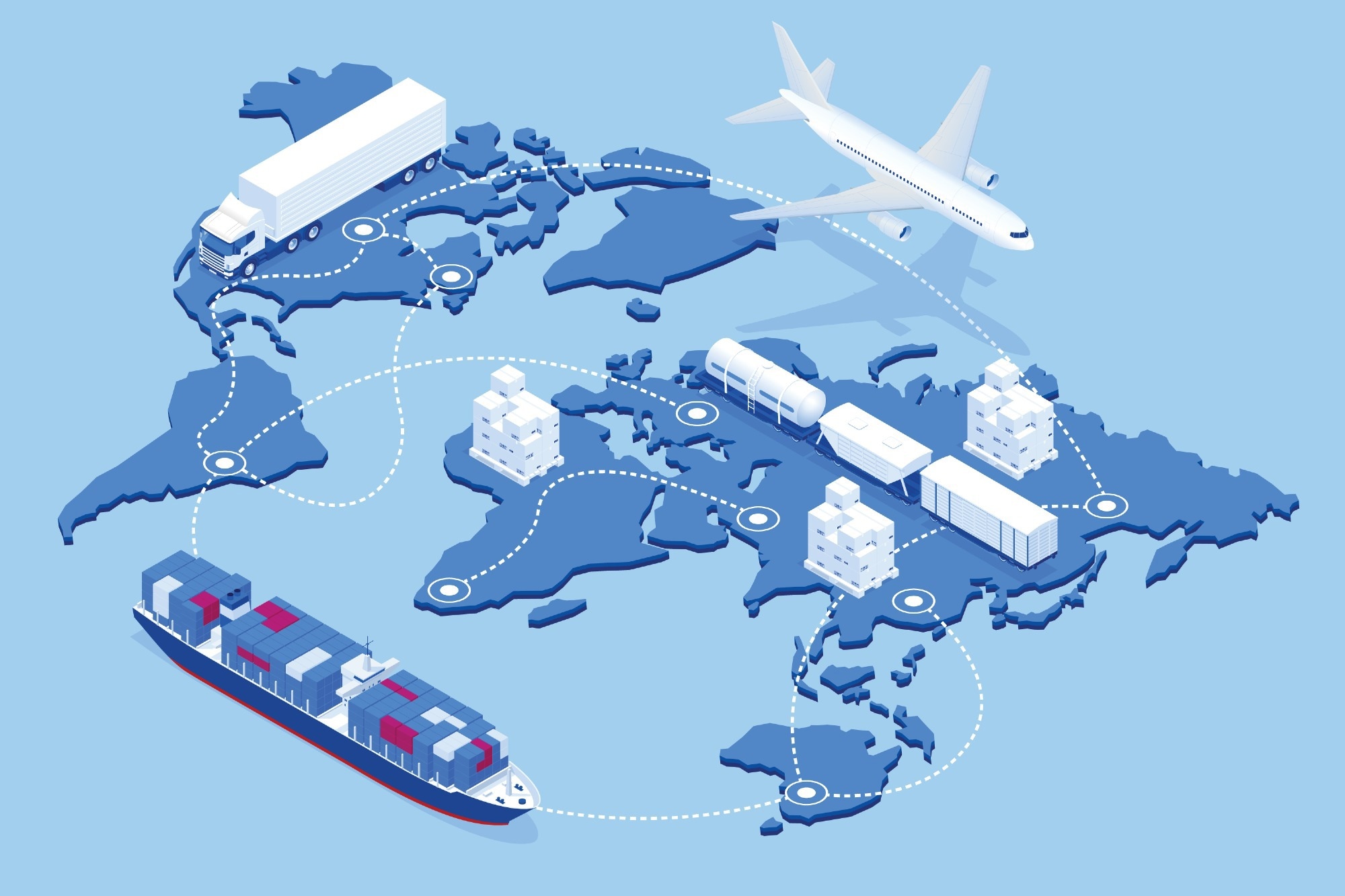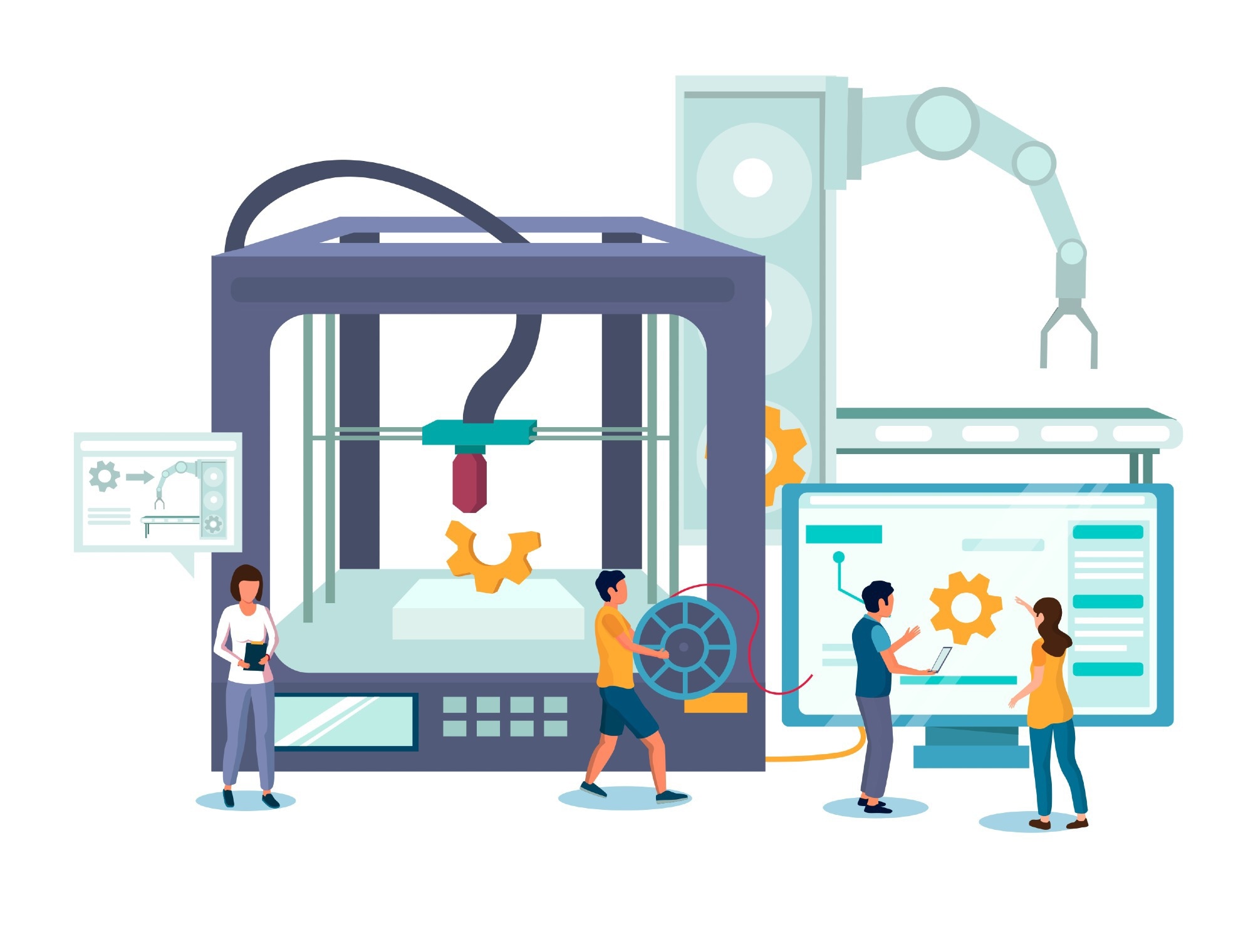Additive manufacturing (AM), often known as 3D printing, is a disruptive invention that will have a significant influence on global supply chains and procedures. Manufacturers are confronted with increasing scrutiny as to the transparency of their goods purchasing and manufacturing procedures, as well as global supply chain interruptions that limit their capacity to deliver products to fulfill the worldwide demand of their customers. In such tough situations, digital technologies such as additive manufacturing and the Internet of things can play a significant role.

Image Credit: Golden Sikorka/Shutterstock.com
Recent Disruptions to Supply Chains
Disruptions to supply chains continue to afflict global economies, particularly the industrial sector. During the COVID-19 shutdown, supply chain issues became apparent due to a "perfect storm" of circumstances, including swings in demand, labor shortages, and structural constraints. Consumers in the United States have felt the effects of inflation and increased costs, decreased quantities of available items, and longer wait times while making purchases.
In the years since, several difficulties in the worldwide supply chain have been highlighted. These include overexposure to economic catastrophe due to lean manufacturing models, challenges in the transport and shipping industry with underemployment and poor infrastructure, a scarcity of container ships and undercarriage, price fluctuations in supply and demand, changes in consumer behavior, the implications of rigorous fiscal stimulus initiatives, and a downward spiral of scarcity resulting from a limited supply of modules and increased import duties for intermediate inputs. Multiple industries have seen price increases, longer wait times, and a tight labor market as a result of these circumstances.
Supply Chain Market Trends
In 2021, the market size for supply chain management was estimated at USD 16.64 billion and is projected to reach USD 58.89 billion by 2030. The worldwide market is anticipated to expand at a CAGR of 10.8% between 2021 and 2030, according to the most recent report by Spherical Insights & Consulting. The rise of the market may be ascribed to developments in digital innovations, the growing need for enhanced supply chain operations visibility among end-users, shipping information transparency, and the expansion of the retail and e-commerce industries.
The global supply chain market is forecast to expand at a compound annual growth rate of 11.2% from 2020 to 2027. Consequently, the market value will expand from $15.85 billion in 2019 to $37.41 billion in 2027. Moreover, this number has remained stable despite the epidemic.
Major Effects of AM on Global Supply Chains
Additive manufacturing shortens the supply chain. Complex geometries can replace numerous conventionally machined or cast assembly pieces using AM. Even in high-labor-cost nations, AM services may be supplied locally at competitive pricing. Today, Europe and North America have several AM service providers, allowing companies to acquire AM services regionally at reasonable pricing compared to Asian vendors.
The 'portable' feature of AM will allow enterprises to get their products to local marketplaces or consumers more quickly. As a result, there will be a transition away from mass fabrication in low-cost nations and towards more local work locations. Companies will be able to manufacture components domestically rather than relying on imports.

Image Credit: Siberian Art/Shutterstock.com
As a tool-free process, 3D printing technology provides producers with unrivaled flexibility to personalize solutions to the individual needs of customers and improve the customer experience. This will result in more flexible supply networks that can quickly adjust to market shifts. 3D printing is an environmentally friendly, energy-efficient, and cost-effective production process. It generates nearly no waste, decreases the danger of excessive production and surplus inventory, and lessens the carbon footprint.
Additive Manufacturing and the Aerospace Supply Chain
As a 3D computer-aided manufacturing (CAM) technique, AM bridges the digital and physical worlds. AM has made the aircraft aftermarket parts industry's supply chain smoother, more productive, and more profitable. Researchers have presented a thorough analysis of how additive manufacturing is affecting the aerospace supply chain in their recent articles published in The journal Logistics.
Maintenance, repair, and overhaul (MRO) and original equipment manufacturers (OEMs) form the aircraft sector, with GE Aviation, Airbus, Boeing, and Rolls-Royce being major OEMs. MROs have obstacles when it comes to delivering low-cost airplane replacement parts with a high rate of response and fulfillment. Both MROs and OEMs fight to improve their production and development operations by implementing lean fabrication strategies to reduce wastage and lead times. AM is anticipated to assist OEMs in placing spare parts production plants near service regions, hence cutting costs and boosting the reliability of the aviation industry's complicated supply chain.
Compared to conventional production, the incorporation of advanced features in additive manufacturing (AM) reduces components and installation procedures, resulting in less inventory. Decentralizing AM may increase customer response, save delivery times and freight costs, and boost accuracy and reliability.
In the aerospace spare parts industry, a centralized AM plant is now preferred over-dispersed AM facilities in terms of total expenditures. It is anticipated that decentralized AM will be less costly in the future owing to improved automation, decreased prices, and smaller machines. In addition, a decentralized supply chain has fewer carbon emissions than a centralized supply chain due to lower emissions during the production stage and less outward transit.
How is AM Affecting Upstream Automotive Supply Chains?
Automakers including General Motors, BMW, Ford, Daimler, and Volkswagen have utilized AM for the production of specialized vehicle components or parts for numerous years. As per the research published in Supply Chain Forum: An International Journal, the COVID-19 epidemic has emphasized the need for a more robust supply chain, and additive manufacturing can play a significant part in achieving this by minimizing reliance on foreign suppliers by integrating complicated vehicle components into a single structure. AM's design flexibility can minimize the number of needed components, contribute to weight reduction, and reduce inventory levels. The procurement department is the optimal starting point for integrating additive manufacturing into the automotive supply chain to build a more robust network.
Due to the COVID-19 epidemic, digitalizing procurement in the global automobile sector is crucial. Procurement 4.0, a digital extension of Industry 4.0, has emerged from this drive to study future supply chains. Procurement 4.0 is the digital transformation of purchasing operations using ICT and internet-based automated decision-making tools to increase consumer and company value. To successfully implement Industry 4.0 innovations in global supply chains, external supply activities must be aligned with factory floor operations due to an unstable business climate.
Additive Manufacturing Impacting the Medical Sector Supply Chain
The International Journal of Environmental Research and Public Health has an article focused on how additive manufacturing can affect the supply chain of the medical and healthcare sector. In addition to the manufacture of highly tailored and on-demand medical items, additive manufacturing leads to significant changes in internal logistics management and the production of replacement parts. This method has several advantages for the reduction of waste.
The use of 3D printing alters the method in which medicine is practiced, resulting in major changes to manufacturing and distribution systems. By converting these principles into real ideas, it is possible to identify two innovation fronts. The first relates to the ability to provide bespoke solutions for bone and orthodontic prostheses and medical aids, hence expanding the number of applications and adjusting manufacturing procedures. Thus, there is a propensity to surpass the conventional industrial environment, which is based on regular goods.
The second area of innovation is in the manufacturing of pharmaceuticals and the intersecting of the manufacturing and distribution phases. For example, 3D printing could be a way to make medicines right in the pharmacy, since drugs tend to be made with ingredients that are specific to each patient's illness.
So, it seems clear that the use of 3D printers in the medical field can change both the way things are made and how they are distributed.
As the corporate community continues to address global supply chain concerns, 3D printing provides an interesting solution. Reducing the length and number of connections in the supply chain reduces many of the operational complications, expenses, and constraints that plague businesses. Companies that continue to adhere to outdated practices may face the risk of a never-ending succession of supply chain issues.
More from AZoM: Gallium Nitride Semiconductors in 5G Networks
References and Further Reading
Debnath B. et. al. (2022). Impact of Additive Manufacturing on the Supply Chain of Aerospace Spare Parts Industry—A Review. Logistics. 6(2). 28. Available at: https://doi.org/10.3390/logistics6020028
Globen News Wire, 2022. Global Supply Chain Management Market Size To Reach USD 58.89 Billion By 2030. [Online]
Available at: https://www.globenewswire.com/en/news-release/2022/11/30/2565343/0/en/Global-Supply-Chain-Management-Market-Size-To-Reach-USD-58-89-Billion-By-2030-CAGR-of-10-8.html
Konica Minolta, 2023. How 3D printing is reshaping the future of supply chains. [Online]
Available at: https://www.konicaminolta.com.au/news/blogs/how-3d-printing-is-reshaping-the-future-of-supply-chains
Muhammad M. Kerbache L. & Elomri A. (2022) Potential of additive manufacturing for upstream automotive supply chains, Supply Chain Forum: An International Journal. 23(1). 1-19. Available at: https://doi.org/10.1080/16258312.2021.1973872
KPMG, 2022. Six key trends impacting global supply chains in 2022. [Online]
Available at: https://kpmg.com/sg/en/home/insights/2022/03/six-key-trends-impacting-global-supply-chains-in-2022.html
Makerverse, 2022. How to Build Resilient Supply Chains with Additive Manufacturing. [Online]
Available at: https://www.makerverse.ai/insights-and-trends/how-to-build-resilient-supply-chains-with-additive-manufacturing
Rogers, D., 2022. How 3D Printing Can Streamline Supply Chains. [Online]
Available at: https://www.supplychainbrain.com/blogs/1-think-tank/post/34349-how-3d-printing-can-streamline-supply-chains#:~:text=Moreover%2C%203D%20printing%20allows%20for,batches%20or%20mass%2Dmarket%20volumes
The White House, 2022. Using Additive Manufacturing to Improve Supply Chain Resilience and Bolster Small and Mid-Size Firms. [Online]
Available at: https://www.whitehouse.gov/cea/written-materials/2022/05/09/using-additive-manufacturing-to-improve-supply-chain-resilience-and-bolster-small-and-mid-size-firms/
Musso F, Murmura F, Bravi L. (2022). Organizational and Supply Chain Impacts of 3D Printers Implementation in the Medical Sector. International Journal of Environmental Research and Public Health. 19(12). 7057. Available at: https://doi.org/10.3390/ijerph1912705
Disclaimer: The views expressed here are those of the author expressed in their private capacity and do not necessarily represent the views of AZoM.com Limited T/A AZoNetwork the owner and operator of this website. This disclaimer forms part of the Terms and conditions of use of this website.